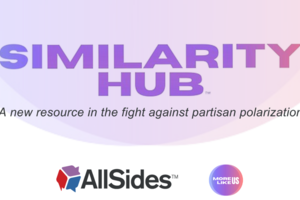Why LGBTQ+ Voters Will Decide The 2024 Presidential Election

Written by Vance Reavie and Brett Loyd.
Vance Reavie (Center bias) is a tech entrepreneur, AI/ML specialist, Independent Center leader, and current CEO of Junction AI. Brett Loyd (Center bias) is the President Of The Nonpartisan Bullfinch Group.
Over the past decade, voters identifying as LGBTQ+ have more than doubled. What’s more, this group is growing. The LGBTQ+ demographic is now a larger voting bloc than the suburban, white, mothers that pundits love to discuss on election night.
Both parties, and their candidates, would be wise to look at the numbers, as the LGBTQ+ community could decide the 2024 election.
A Gallup tracking study from 2012 to 2023 shows that those self-identifying as lesbian, gay, bisexual, transgender, or something other than heterosexual increased from 3.5% in 2012 to 7.6%, steadily increasing each year the study was conducted.
Gallup noted that as many as 1 in 5 Gen Z, and 1 in 10 Millennials, identify as LGBTQ+. The Williams Institute recently noted this increase as well, reporting that among younger Americans, 14.9% in the 18-24 and 8.8% in the 25-34 cohorts identify as LGBTQ+.
Voter data appears to mirror this research, as AP exit polls from the last presidential election showed that 7% of voters identified as gay, lesbian, bisexual or transgender.
The 2020 exit polling shows that Trump won or tied the “straight” vote in 5 of the 6 states that Cook Report has listed as ‘toss up’ for 2024, but Biden won the election by winning the LGBTQ+ vote in all six of those states.
At 7%, the LGBTQ vote has the potential to determine the results in critical swing states. The Cook Political Report lists six states as ‘toss up’ for the 2024 presidential election; the average margin of victory for those six states in 2020 was 1.25%. This represents only a small portion, about 18%, of the total LGBTQ vote.
If there were an 18-point swing among this cohort from the last election to this election, every one of these swing states would flip.
In looking at the recent nationwide n600 LGBTQ+ survey by The Independent Center, including a deep dive into Arizona, Georgia and Pennsylvania, racially and ethnically, this group looks similar to the race and ethnic breaks we see among all adults in America. The group skews a bit younger, is a bit more Democratic than Republican, but by and large, it is as diverse as any cohort. And as such, this group votes that way.
Looking back to the 2020 exit polls, Biden received 64% of the LGBTQ+ vote, 13 points lower than what Clinton received from the same demographic four years prior. If that trend were to continue in 2024, and all else remained equal, the Democratic candidate would receive only 51% of the LGBTQ+ vote. This 13-point shift among 7% of the electorate means the entire election would shift 0.91% – which may not seem like a lot, but remember, Biden only won the state by 0.24%.
That means Georgia would flip.
Arizona and Wisconsin likely would flip as well. If Biden were to lose those three states, he’d lose the race. This isn’t some remote possibility. In Arizona, Biden is only currently garnering support from 42% of this cohort, and in Pennsylvania, it is 32%.
This doesn’t suggest these voters are flocking to the GOP or Trump, given their position on LGBTQ+ issues. The Independent Center’s survey found nationwide only 22% saying they would support Trump, while 21% saying they would support the independent/third-party candidate, and 13% remaining ‘unsure’ how they would vote. Factoring in the double-digit swing from 2016 to 2020 indicates that LGBTQ+ voters aren’t beholden to any one party or candidate. Their votes are up for the taking.
LGBTQ+ voters are personally positive, optimistic individuals: about 10 points more personally optimistic than the average American, with over half not affiliating with either the Republican or Democratic Party, and about 60% ideologically falling somewhere between ‘somewhat liberal’ to ‘somewhat conservative’ – they are moderates. LGBTQ+ voters aren’t enthralled with Biden and the Democrats, with a similar approval rating as the population as a whole, but they are more trusting of the Democrats to protect their rights, swaying liberal “due to the GOP’s anti-LGBTQ+ agenda”.
The LGBTQ+ community may not receive as much airtime and often is not included in many public opinion polls’ demographics, but they should be. Consider this: no demographic breakout of gender, race, age, income, or geographic area saw as large of a shift as the LGBTQ+ community from 2016 to 2020.
It might come as a surprise, or even shock to some, but in 2024, the road to the White House runs through the LGBTQ+ community.
This piece was reviewed and edited by Isaiah Anthony, Deputy Blog Editor (Center bias).

April 26th, 2024

April 25th, 2024

April 25th, 2024